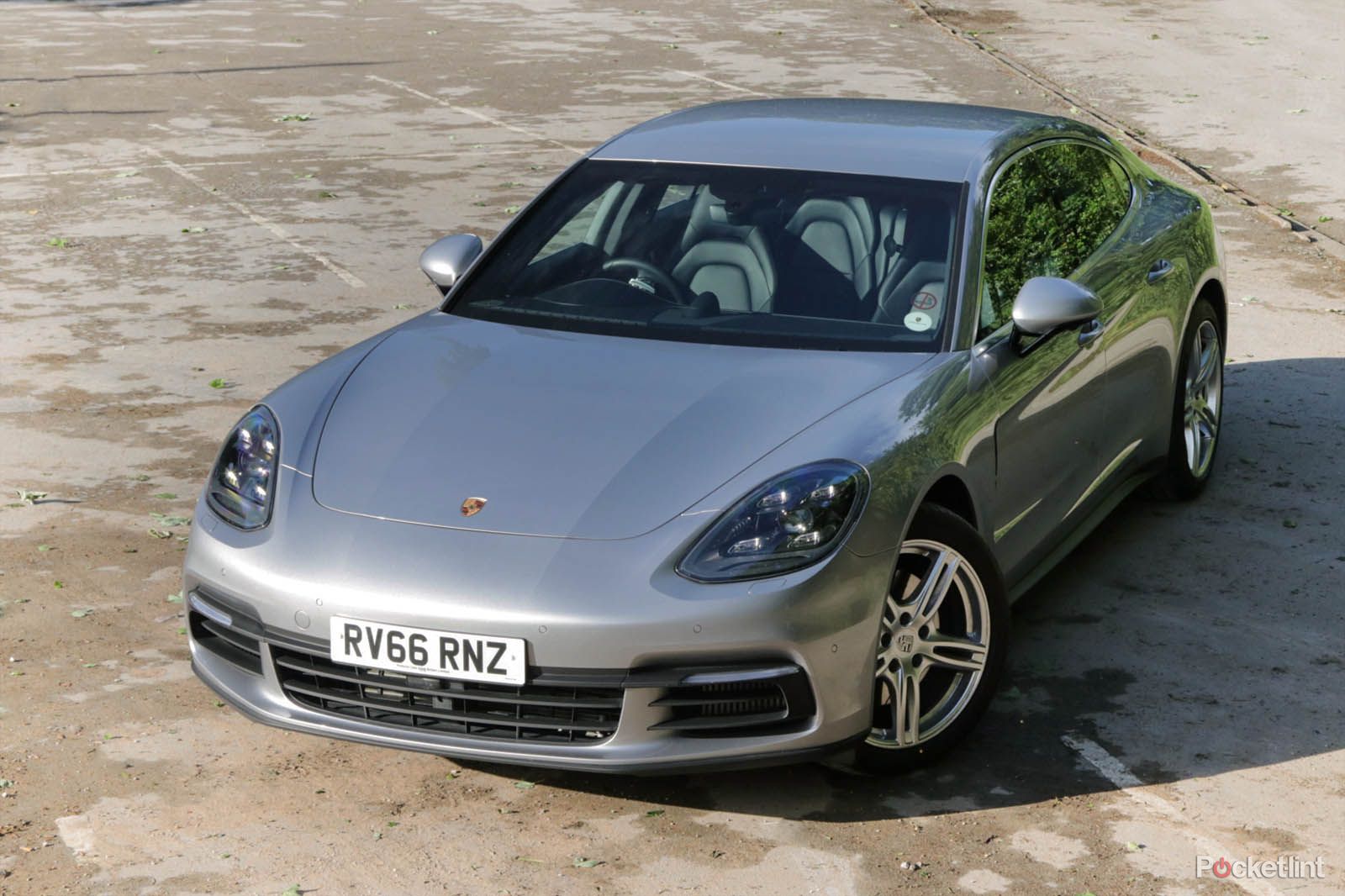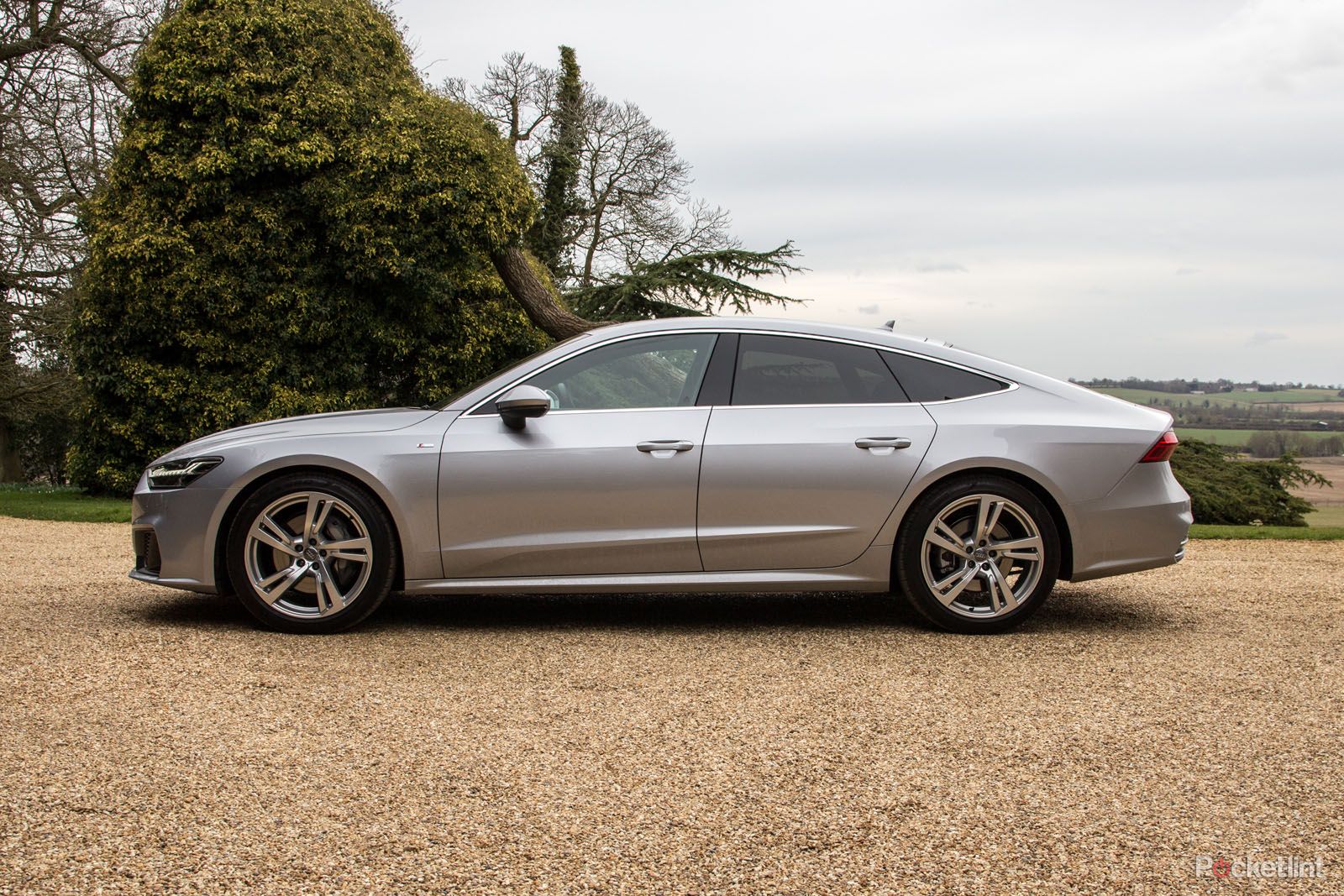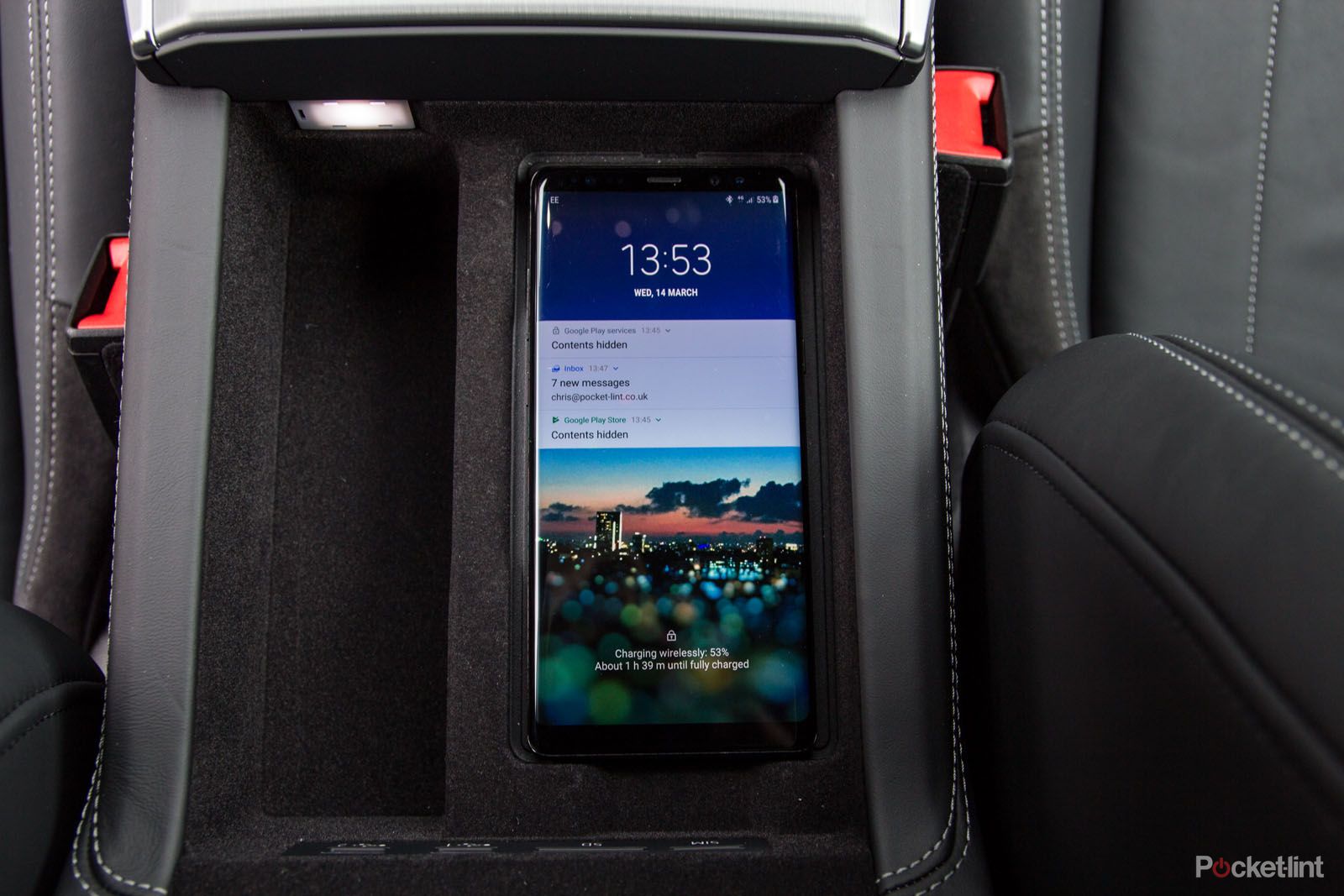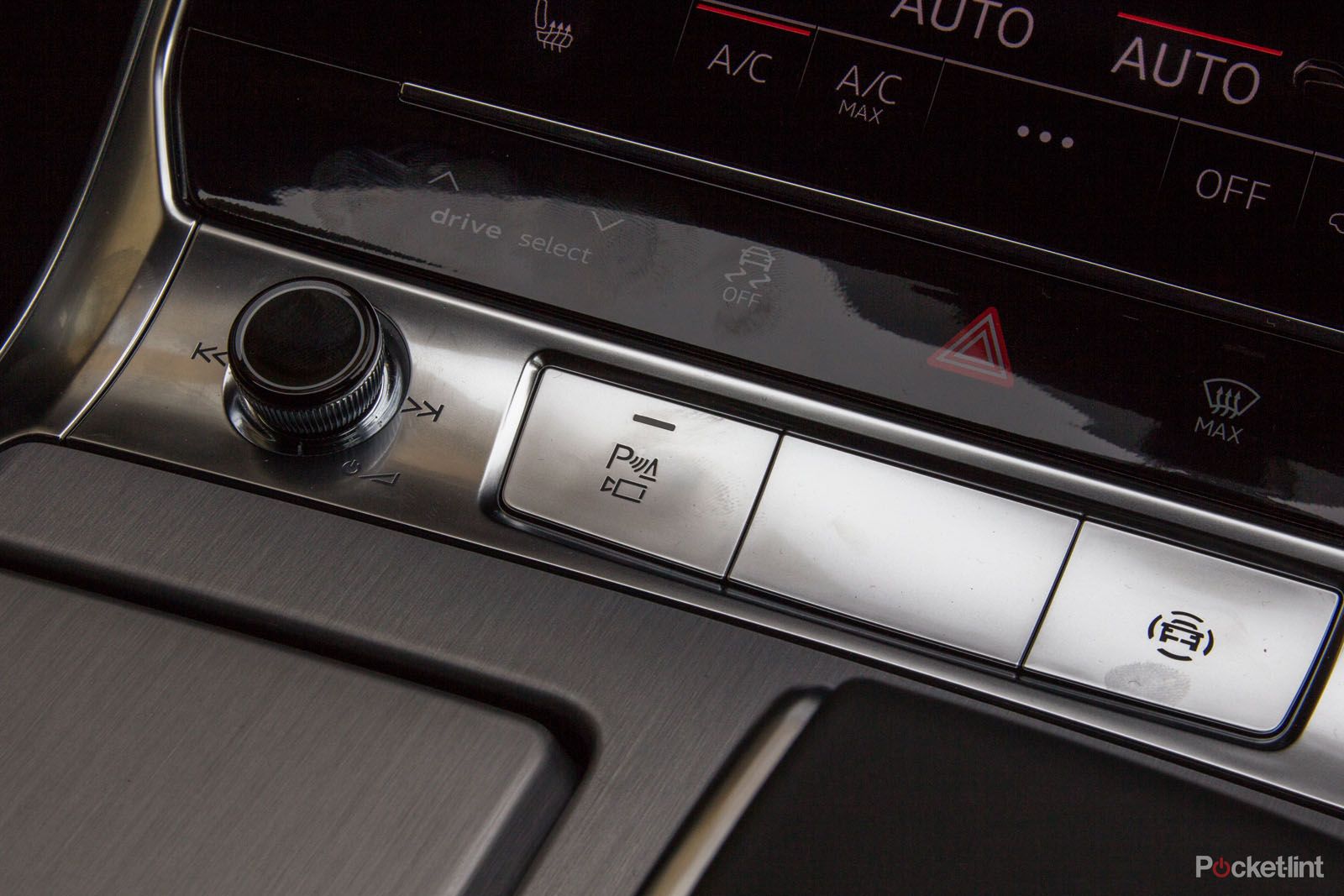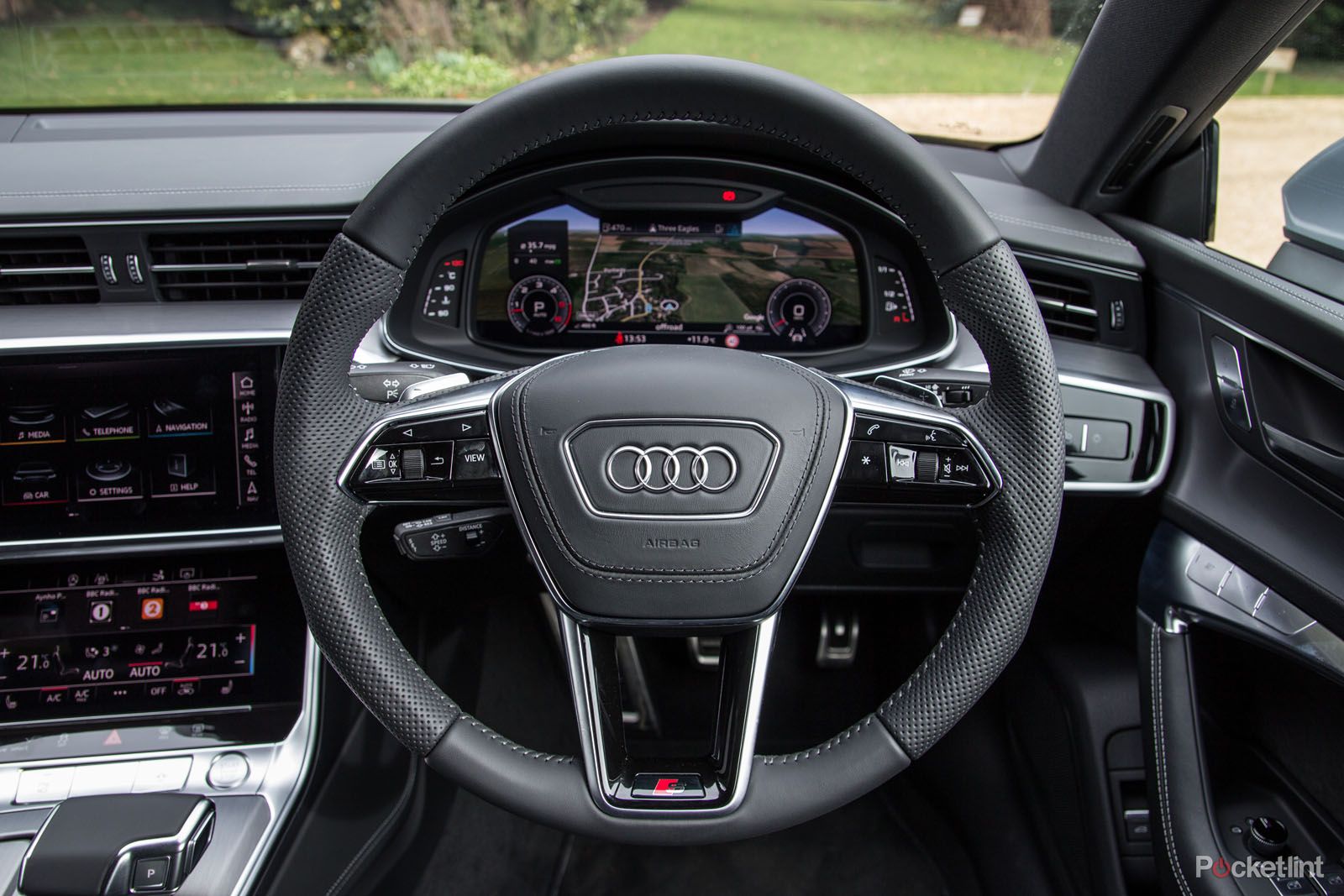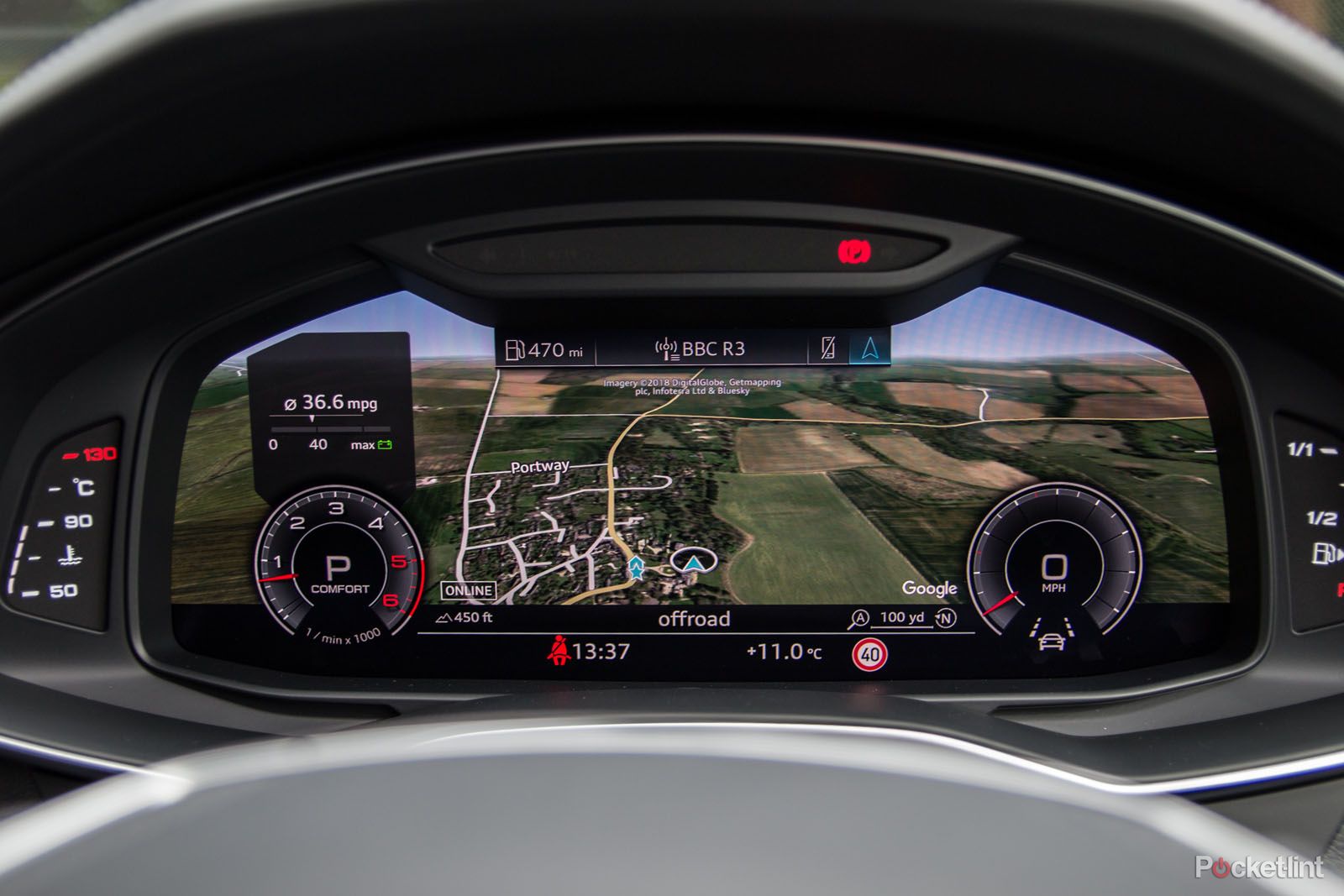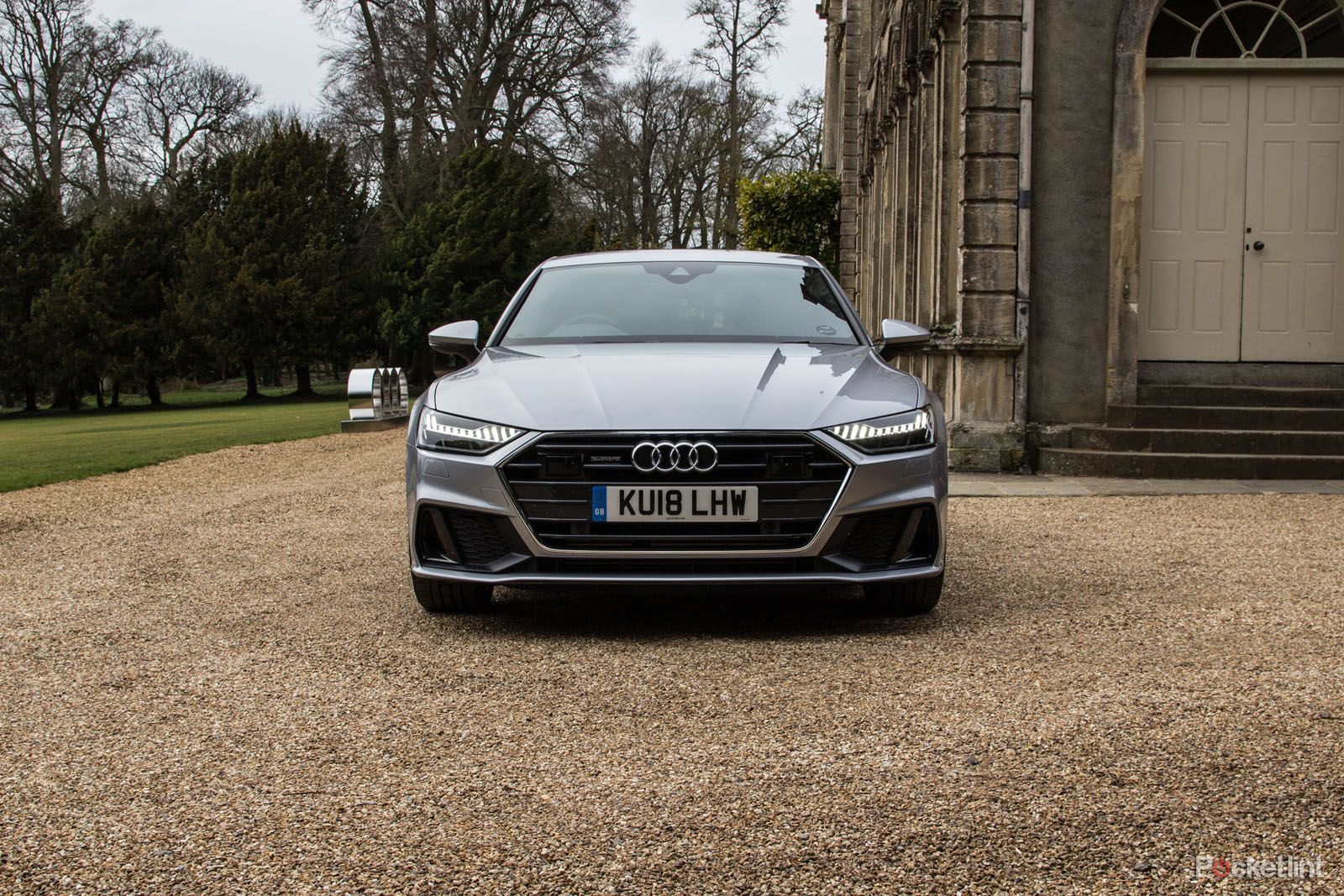The launch of the Audi A8 was the start of something new. While Audi seems to release lots of new cars all the time, the Audi A7 is one of new generation: its modern exterior meets a vastly updated interior compared to the older model, complete with new technology that'll wipe out everything you've learnt about Audi interiors over the last 10 years.
Our quick take
The Audi A7 feels like a car that's embracing the future. From an interior point of view, its tech-filled cabin has all the options you could possibly want - much of which is delivered as standard.
The drive is also confident, comfortable and fun once underway, sitting more on the sporty side than the cruiser side (we think it's worth sticking to Sport trim if comfort is more important to you). There's plenty of executive appeal.
So the Audi A7 has got the premium interior, the grand touring power and ample practicality boxes all ticked. However, there's also some strong competition: the BMW 6 Gran Turismo or Mercedes CLS, for example, or you could reach out to the Jaguar XJ or Porsche Panamera. All of those cars will put a smile on your face, as will the Audi.
More tech and more engine options will be coming to the Audi A7 in the future, so it's one car of the future that's well worth keeping an eye on.
Alternatives to consider:
Porsche Panamera
More expensive than the A7, but then it feels like a significant step up. Available with a range of hugely powerful engines, including an enticing 'e-hybrid' version which you can plug in, the Panamera's forte is covering huge distances at speed and in create comfort. When the road gets twisty, it entertains too. Lacks some of the A7's semi-autonomous Level 2 and driver assistance systems, but then do you buy a Porsche to have it drive you, or to drive it? Looks are well-judged — much improved over the first generation — and the Panamera feels special to sit in, with high-quality materials used. It's also available as a more practical, Sport Turismo estate version.
Read our full review: Porsche Panamera
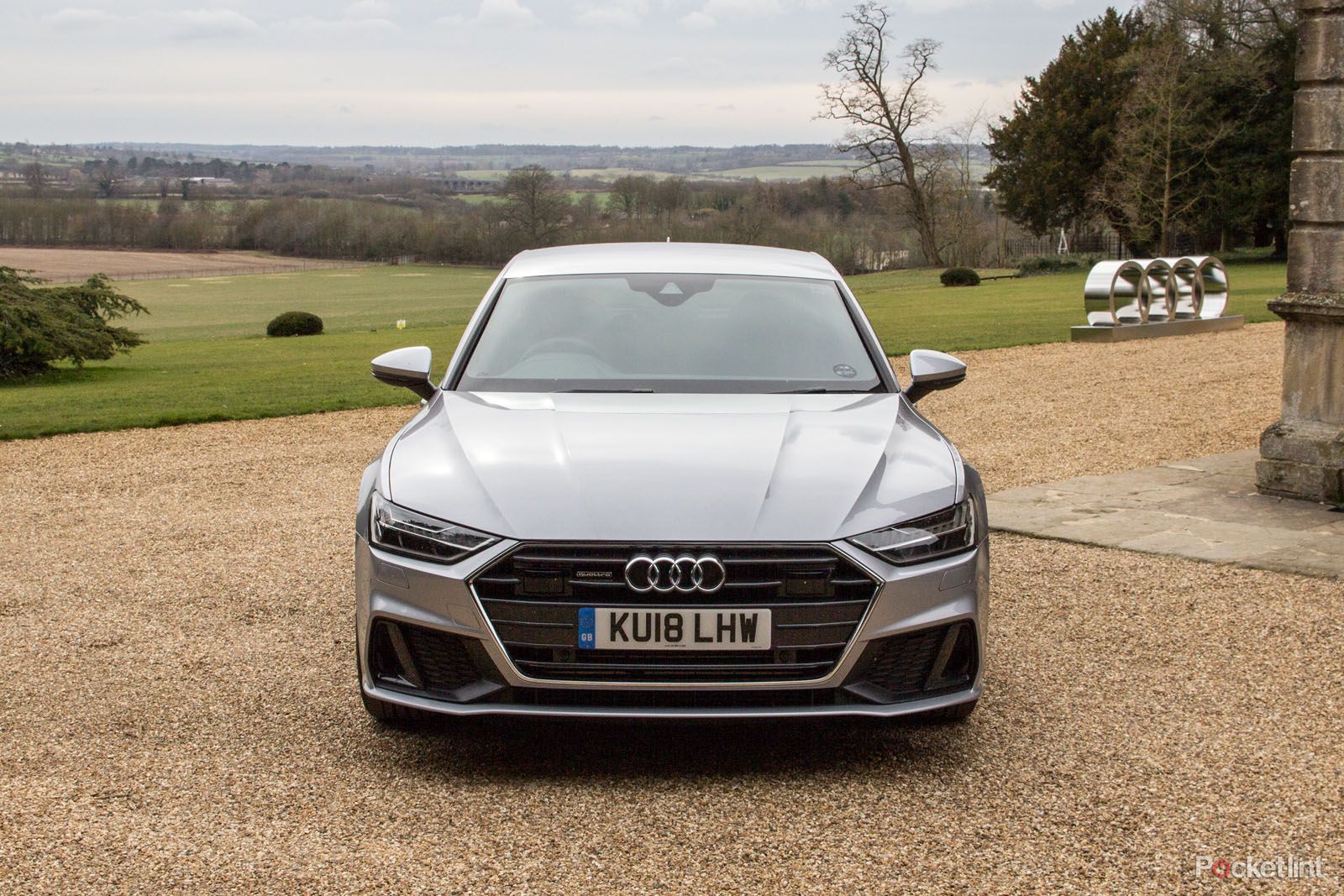
Audi A7 - 4.0 / 5
| FOR | AGAINST |
|---|---|
|
|
This car, like the Audi A8, is designed to achieve level 3 autonomy in its lifetime. This car will, via a smartphone app, park itself in your garage (after an upgrade). But unlike the A8, this isn't a limousine for executive transfer - it's a premium grand touring 5-door coupe for the executive to drive.
Each of those descriptive words is important because it outlines the broad ambitions of the new A7: premium goes with the brand; grand touring signifies power and luxury for long drives; the 5-door coupe part tells you it's still practical. So how well does it balance this trio?
Sporty coupe design, now much sharper
Distinctive to the new A7 is the power bulge in the bonnet and some deceptive shoulders. From some angles this looks like an aggressive and muscular design, but from other angles that seems to fall away. There's still a slightly strange proportionality to the car, with the rear seeming to drop away suddenly thanks to that coupe roofline, but it's all sharper and sportier than the retiring A7 model.
The signature Audi grille design centres a front that's wide and low, presenting custom headlights that are suitably exotic, with ribbed daytime running lights, paired with a rear lighting setup which features some 292 individual LEDs (Sport trim lights are a little less fancy). Puncturing the grille are two huge sensor arrays, housing laser scanners and radar to supply data on the outside world and enable some of this car's more advanced safety and autonomous functions.
A whole new futuristic interior
While the exterior bears a passing resemblance to the last A7, the interior does not. It's a unique interior (for the moment), as while it shares a lot of the same technology as the Audi A8 - with the dual touchscreen arrangement in the centre console - the look is totally different.
The A7's dash sticks to using similar angles like the exterior, with those two central touchscreen displays presenting pretty much all the interior controls. Buttons, knobs and sliders are almost entirely out, a clean and flat effect that embraces the future is in.
The centre console does retains a volume knob and the start/stop button - both of which we really like - but the gear selector has been minimised to a short stick with ample palm padding, while other controls here are flattened into touch buttons with haptic feedback.
The 10.1-inch top screen operates very much as all car screens do, offering access to the car's settings, navigation, media, calling functions and these are all pretty straight forward. All good here, then.
The lower screen then houses climate control, as well as offering customisable shortcuts (that might be a pre-saved location or a radio station). It mean there's no need to fish around looking for such things - you can simply hit the shortcut button and it happens. This bottom screen also clears to become a scrawl pad when you need to input text, so you can trace the letters with a fingertip, which is almost like having a dash-mounted iPad to scribble on.
Compared to a car interior full of buttons and knobs, we can see that keeping all this fancy-looking kit clean is going to be a breeze. It does get smeary with fingerprints, but there's no risk of it accumulating sandwich crumbs and other debris. Even the cup holders and key holder are hidden under a flap, while the Qi wireless charging pad for your phone and USB connections live in the armrest, out of sight, all nice and tidy.
It's a sophisticated place to be, every inch the premium Audi experience. The interior displays are of a high quality with great contrast and colour (something we normally only say about TVs, but there you go) and opening full-screen mapping or navigating the menus is great.
It supports pinch-and-zoom gestures, too, with two-finger swipes to change the angle of your maps owing adoption of smartphone gestures. It also picks up haptics, with vibration feedback on touch so you know you've actually touched something. That gives a substance to the virtual buttons - you're not just tapping and hoping, you're pressing and getting a physical response that feels surprisingly physical.
You can even plug in your phone to get Android Auto or Apple CarPlay, but the high level of connectivity in the car means you have a lot of services without depending on that smartphone assistance.
Connected glory, but not all plain sailing
So we're all for this hot take on the future, but there are a few holes in the system.
Let's start with voice commands (which isn't a new thing, Audi has been offering it for years). Hit the button on the steering wheel or in the user interface and you can dictate things. But in the A7 this still feels like a years-old experience. With the voice control bar being set so incredibly high by the likes of Amazon Alexa and Google Assistant, Audi doesn't come close. Seriously, Alexa can't come fast enough to give this futuristic car the voice fluidity it deserves.
That voice weakness compounds a slight oddity with interaction that evolves out of this supposedly seamless control interface. It's hard to use on bumpy roads, because there are no physical elements to it - apart from the volume knob. Trying to input a destination as a passenger by writing on the bottom display is difficult while on the move, which is where voice would really help.
Hitting menu buttons when driving can be difficult too, especially having to delve into on-screen controls for climate control, for example. We suspect there's a lot of this experience to come in cars of the future, but it'll evolve over time (not to forget, of course, that in a future autonomous situation such controls will feel even more natural). Right now, we can totally accept that once you hit the smooth Tarmac of the motorway - which, let's face it, is the Audi A7's natural habitat - that you won't have the same sort of problems that you will on a back-country B road.
In the driving seat
The saving grace is that the driver's display in the A7 is the Audi Virtual Cockpit - that glorious 12.3-inch display that's customisable and controlled by the physical buttons on the steering wheel. From the driver's point of view, it's only really inputting a destination on the fly that might cause a problem - and if it's something as simple as going home, then remember that the shortcut buttons solve these problems.
So for the driver, the experience is great. Comfortable sporty seats and acres of leather ensconce you in the cabin, which carries the high quality you'd expect from Audi. The S-line trim gets a slight lift over the entry model, but it's less of a step than in some of Audi's other cars, so Sport trim is worthy of your attention.
The Audi A7 is Quattro - the German marque's way of saying all-wheel drive - as standard, and comes with clever torque distribution to make sure the power is where it's supposed to be. It also features all-wheel steering as an option, changing the steering ratio depending on what you're doing. The result is a tighter turning circle at low speeds which could be useful for navigating tight car parks and notionally better handling at high speeds.
The steering is almost comically light at low speeds, though. And while that might be a benefit to low-speed manoeuvring, it does feel a little out of character for a car of this size. It weights up appreciably with speed but never feels hugely connected.
There's sound deadening to make the A7's cabin a quiet place, not that there's any clamour from a V8 engine up front. Nope, this is the new-generation Audi, thus it comes with two 3.0-litre V6 engine options at launch (with the choice of petrol or diesel).
Furthermore, this is car that Audi is referring to as a "mild hybrid". But don't be confused by what that hybrid means in this sense. It isn't a hybrid like the BMW 5-series iPerformance or the Toyota Prius, instead it's application of some clever technology, using a secondary 48V electrical system to provides assistance in a number of areas.
This system boosts the A7's efficiency by allowing things like smooth coasting and efficient restarting of the engine for a more advanced stop/start system. What this really means is that you might be driving along the motorway and the engine can cut out when you're coasting downhill or no longer accelerating, smoothly restarting ready to provide the power when you need it. The result is a stated figure of 48.7mpg on a combined cycle, with 150g/km CO2 (the petrol, which we've not driven, won't do quite so well on those measures).
A firm ride and a pleasure to drive
The 3.0-litre diesel is mated with an 8-speed tiptronic gearbox, which is as smooth as we've come to expect from Audi's automatics. The petrol gets the double-clutch S tronic 7-speed autobox, so might feel a little faster.
Our only real complaint about the drive is that things can be a little slow to react when pulling away. The A7 doesn't creep when you lift off the brake and then there's a slight delay as you wait for the power to arrive when you put your foot on the accelerator. It's noticeable at lights and when pulling away from roundabouts. Where you might want a smooth delivery of power, you're hit with a mild delay, followed by a stomach warping explosion of power.
On some cars, switching to Sport/Dynamic mode alleviates this (leaving the revs higher so there's power ready to go), and on previous Audi models you've been able to change the off-the-line dynamics by changing the Drive mode. In the A7's case, it doesn't seem to happen so dramatically, so we expect the petrol might deliver a punchier drive.
That might bother impatient city drivers, but once underway, the A7 has no lack of power on tap. It's then that the Audi A7 really sings; the exhaust note of the V6 engine isn't overpowering, with the cabin insulated enough to be spared the constant diesel thrum, but it will still titillate in the higher revs ranges, coupled with plenty of speed. No, it's not a V8, but that dying breed is something that's increasingly harder to acquire in Europe without paying through the nose (both now and probably more so later with changes in tax and fuel prices).
The A7's ride is on the firm side, giving a sporty ride rather than a wallowing cruiser ride. Sports suspension is standard on the S-line trim, lowering the car by 10mm, which isn't necessarily a good thing. Switching to Comfort mode doesn't noticeably change that, but there is the option for self-levelling adaptive air suspension (£2,000) that's certainly worth exploring if you're after a more leisurely cruise. With 19-inch wheels as standard on the Sport, it again reinforces the argument for choosing Sport over the S-line.
There are also a tonne of safety and assistance systems on offer (some still to be made available, which roll into the autonomous side of things). While Audi doesn't push the A7 as a self-driving car, the inclusion of adaptive cruise control working with the lane departure system pretty much drives the car itself (available through the addition of the Tour Pack), although the A7 doesn't yet offer a single button to press to hand control over to the car, like you get with Nissan ProPilot.
Many of the smarter options cost a fair chunk though. Like with any Audi, you can spend a lot adding many of the more advanced features. But rest assured, you get a lot as standard on both trim levels: interior LED lighting, Virtual Cockpit, those twin interior displays, navigation, smartphone connection options, cruise control, rear-view camera, parking sensors, and traffic jam assist.
To recap
From the interior quality - distinctive from other Audis - to the sharper exterior design, there's plenty of executive appeal in the new A7. That's also reflected in the drive, which is confident, comfortable and fun once underway, sitting more on the sporty side than the cruiser side. Competition is rife, though, which makes that buying decision all the tougher.

